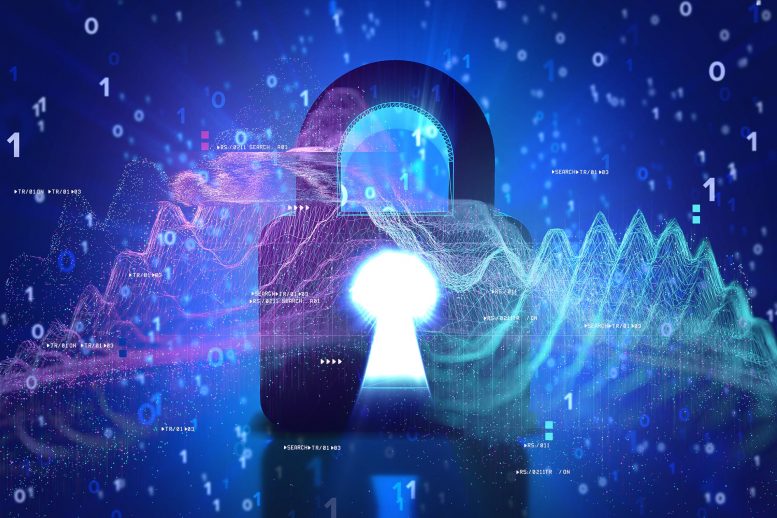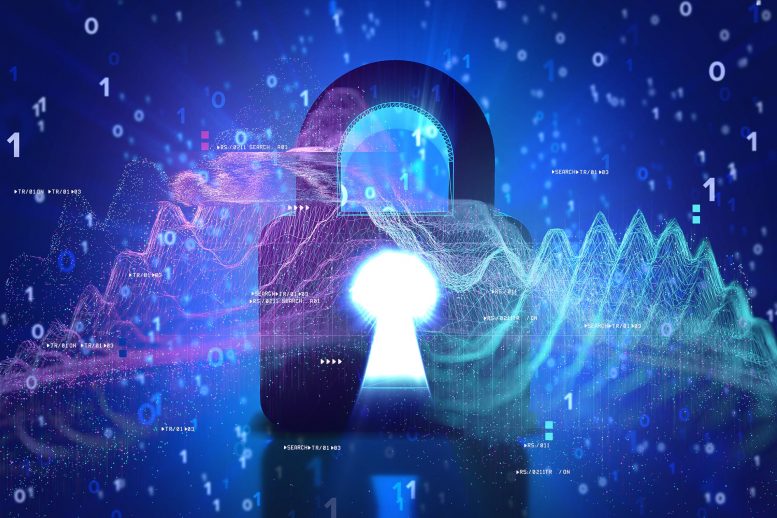

Current internet data encryption relies on mathematical algorithms vulnerable to quantum computing, but a new method based on quantum cryptography uses light particles for tamper-evident encoding and could be globally extended with satellites. A hybrid network might also combine both encryption types, utilizing quantum methods only for particularly sensitive data.
Quantum cryptography enables secure communication over large distances.
How can we guarantee that data sent over the internet is only accessible to its intended recipient? Currently, our data is secured using encryption methods based on the premise that factoring large numbers is a complex task. However, as quantum computing advances, these encryption techniques may become vulnerable and potentially ineffective in the future.
Encryption by means of physical laws
Tobias Vogl, a professor of Quantum Communication Systems Engineering, is working on an encryption process that relies on principles of physics. “Security will be based on the information being encoded into individual light particles and then transmitted. The laws of physics do not permit this information to be extracted or copied. When the information is intercepted, the light particles change their characteristics. Because we can measure these state changes, any attempt to intercept the transmitted data will be recognized immediately, regardless of future advances in technology,” says Tobias Vogl.
The big challenge in so-called quantum cryptography lies in the transmission of data over long distances. In classical communications, information is encoded in many light particles and transmitted through optical fibers. However, the information in a single particle cannot be copied. As a result, the light signal cannot be repeatedly amplified, as with current optical fiber transmissions. This limits the transmission distance for the information to a few hundred kilometers.
To send information to other cities or continents, the structure of the atmosphere will be used. At altitudes higher than around 10 kilometers, the atmosphere is so thin that light is neither scattered nor absorbed. This will make it possible to use satellites in order to extend quantum communications over longer distances.
Satellites for quantum communications
As part of the QUICK³ mission, Tobias Vogl and his team are developing an entire system, including all of the components needed to build a satellite for quantum communications. In a first step, the team tested each of the satellite components. The next step will be to try out the entire system in space.
The researchers will investigate whether the technology can withstand outer space conditions and how the individual system components interact. The satellite launch is scheduled for 2025. To create an overarching network for quantum communications, however, hundreds or perhaps thousands of satellites will be needed.
Hybrid network for encryption
The concept does not necessarily require all information to be transmitted using this method, which is highly complex and costly. It is conceivable that a hybrid network could be implemented in which data can be encrypted either physically or mathematically. Antonia Wachter-Zeh, a professor of Coding and Cryptography, is working to develop algorithms sufficiently complex that not even quantum computers can solve them.
In the future, it will still be enough to encrypt most information using mathematical algorithms. Quantum cryptography will be an option only for documents requiring special protection, for example in communications between banks.
Reference: “QUICK3 – Design of a Satellite-Based Quantum Light Source for Quantum Communication and Extended Physical Theory Tests in Space” by Najme Ahmadi, Sven Schwertfeger, Philipp Werner, Lukas Wiese, Joseph Lester, Elisa Da Ros, Josefine Krause, Sebastian Ritter, Mostafa Abasifard, Chanaprom Cholsuk, Ria G. Krämer, Simone Atzeni, Mustafa Gündoğan, Subash Sachidananda, Daniel Pardo, Stefan Nolte, Alexander Lohrmann, Alexander Ling, Julian Bartholomäus, Giacomo Corrielli, Markus Krutzik and Tobias Vogl, 21 January 2024, Advanced Quantum Technologies.
DOI: 10.1002/qute.202300343
